Triceps muscle strain: Cause, Symptoms, Treatment, Exercise
Table of Contents
What is a triceps muscle strain?
- Triceps muscle strain generally does following an unexpected workforce or extent on the muscle. There’s instant pain and sometimes feeling a sharp pain in the muscle or a popping sound.
- This isn’t a common muscle strain, although may sometimes do in sports or weightlifters where rapid, forceful elbow extension is required.
- A triceps muscle strain is a damage to the fibers of the muscle group on the back of the upper arm. It’s also known as a pulled triceps muscle and a triceps muscle rupture.
- Physiotherapy can help to reduce symptoms of a triceps muscle strain.
- Triceps strains are also caused by repetitive strain or overuse. This includes performing a‘ pushing’ motion away from your body, for example, press-ups or a‘ bench press’ whilst toning.
Where is the triceps muscle located?
- The triceps brachii is a large muscle of the upper arm in the human. The triceps run along the humerus is the main bone of the upper arm connecting the shoulder and the elbow. together with the biceps, it enables extension and retraction of the forearm.
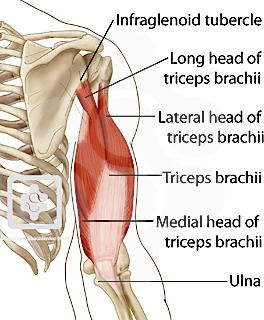
- The long head arises from the infraglenoid cyst of the scapula. It extends distally front to the teres minor and back to the teres major.
- Origin
- Long head infraglenoid cyst of the scapula
- Lateral head above the radial groove
- Medium head below the radial groove
- Insertion
- Olecranon process of ulna
- Artery
- Deep brachial arterial, posterior circumflex humeral arterial( long head only)
- Nerve
- Radial nerve
- Actions
- Long head extends, Extends shoulder, adducts arm, Extends forearm
- Antagonist
- Biceps brachii muscle
What are the cause of triceps muscle strain?
- An acute triceps muscle strain is one time your muscle tears quickly and unexpectedly. muscle tears will do either from injuries or trauma. this will respond to
- Not warming up properly before physical exercise
- Poor flexibility
- Poor exercise
- Overexertion and fatigue
- Weakness
- Acute injuries are generally the result of a single traumatic event and affect a macro-trauma to the muscle. There’s an the pronounced link between the cause and noticeable symptoms. They do contact sports similar to tennis because of their dynamic and high strike nature. Moving or extending the shoulder and elbow in an unusual or unfamiliar way can lead to a strain.
- Overuse
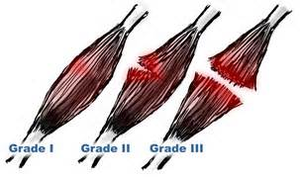
Triceps muscle strain is classified into three grade
- Grade 1: Triceps muscle strain is classified as a minor injury. It happens when the triceps muscles or tendons are overstretched, but you do not lose mobility or strength.
- Grade 2: The strain is moderate tearing in the triceps muscle or tendons that causes some loss of mobility or strength.
- Grade 3: Strain is a complete rupture of the triceps muscle or tendons. If you have a total tear or strain, you may require surgery to repair muscle strain.
Signs and symptoms
rely on the depend on the intensity of the injury.
- In delicate triceps muscle strain could feel slightly stiff, however still versatile enough to be used.
- Unexpected pain in the backside of the arm.
- Pain or tenderness over the triceps muscle
- Snapping or popping sensation in your triceps.
- Swelling and bruising in your triceps muscle.
- Limited movement of the triceps muscle
- Triceps muscle spasms
- Muscle weakness
- Muscle stiffness
How to diagnose triceps muscle strain?
- Most of the minor or partial muscle strains don’t require diagnostic testing, however, these tests will help confirm if you have a rupture strain and will rule out other causes of shoulder or back arm pain.
- X-rays will provide a two-dimensional image of the overall structure of your upper arm, elbow, and shoulder. They help identify instability, avulsion fractures, abnormal bone shapes, or other problems.
- CT scans and diagnostic ultrasounds may be used to look internally at muscle and tendons.
- MRIs will provide more information and will help to evaluate the soft tissues in and around your triceps muscle. They can identify tendon or ligament damage, and can help to determine the extent of your injury, the grade of your tear or inflammation, as well as other similar conditions.
Assessment
- Subjective assessment
- History with associated symptoms
- Mechanism of injury
- Inciting trauma-direction and extent of injury force
- Repetitious trauma- defective postural related injuries
- Observation Strain injuries of the trapezius may present with an obvious deformity similar to a bulge or defect in the muscle belly.
- Tenderness
- Swelling
Treatment
FOR immediate
- Nonsurgical, Conservative treatment maximum muscle strains do not demand surgery if the muscle is fully damaged doctors suggest surgery If there is a partial gash also the athlete can replace it when they are effortless and have normal strength and movement. This generally occurs following anywhere from many weeks to many months of significant treatment and therapy. When the muscle is fully damaged, the athlete may advantage from surgical repair.
- Some therapists suggest avoiding inimical pain medicines that can extend your threat of bleeding — similar to over- the-counter (OTC) medicine (naproxen sodium (Aleve) aspirin and ibuprofen (Advil, Motrin IB), — during the first 48 hours after a muscle strain. Acetaminophen (Tylenol) and others can be helpful for pain relief during this period.
- A physiotherapist can help you to increase the strength and stability of the injured joint or limb. Your doctor may suggest that you stabilize with a brace. For some muscle injuries, triceps muscle sprint surgery may be called.
- To prevent swelling and pain as first aid by following the RICE principle:
- R- rest
- I- ice for cooling
- C- contraction tapping and splinting
- E- elevation

the R.I.C.E approach
- Rest. Avoid activities that cause pain, swelling, or discomfort. don’t avoid all physical activity.
- Ice. though you are seeking medical facilities,ice the world right away. Use an associate degree ice pack or slush tub of ice and water for15 to 20 minutes every time occasion anytime and repeat every 2 to 3 hours. In contrast, you are awake for the primary few days once the injury.
- Compression. to assist stop swelling, compress the world with an associate degree bandage till the swelling stops. do not wrap it too tightly otherwise, you might hinder circulation. Begin wrapping at the top farthest from your heart. Loosen the wrap if the pain increases, space becomes numb or swelling is going on below the wrapped area.
- Elevation. Elevate the burned space on top of your heart’s extent, particularly at midnight, that permits gravity to assist scale back swelling.
Physiotherapy treatment
The aim of activity treatment is
- Relieve triceps muscle pain
- Reduce muscle swelling
- Increases triceps muscle strengths.
- Improve full mobility of the ligament and corresponding joint
- Restore patient’s confidence
- Restore patients’ full functional activity
Phase one: First week after muscle strain
Electrotherapy
- Ultrasound has been used for tissue healing
- Increases blood circulation and mobility.
- To reduce swelling and pain
- Cryotherapy:
- Inflammation and swelling can be reduced by applying cryotherapy in form of ice packs, and cold water baths to the affected area. Continuous application of cold several times a day for 15-30 minutes at a time is recommended.
- TENS
- Transcutaneous electrical nerve stimulation (TENS) may be able to help reduce pain and muscle spasms.
- Interferential therapy (IFT) here are the main clinical applications for which IFT appears to be used:
- Pain relief
- Muscle stimulation
- Increased local blood flow
- Reduction of edema
Phase two:Two to four week
- Electrotherapy
After pain relief start an exercise
- Active exercise for a few days
- Shoulder extension
- Elbow extension with shoulder extension
- Adduction of arm
- Mild stretching
phase three:Five to twelve week
Strengthening exercise
1.Overhead extension
-Begin standing with your bottoms in a slight split posture, with the left bottom exactly just behind the right and the legs about hips- spread apart. Weight should be also distributed between both bases. relax the knees and be sure that the core is joined so that you maintain good posture throughout the movement.
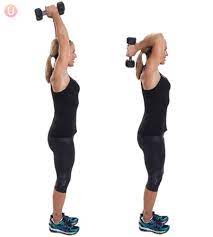
-You can perform this exercise with one dumbbell, cupped in both hands so the palms in front of the ceiling or a dumbbell held in each hand. alternately, you can use a resistance band by standing on one end and holding the other ends in your hands behind your back.
-Lift the dumbbell directly above. Be sure that the head stays lined up over the chest, the core remains joined, and the shoulders are relaxed.
-Extend both arms completely, also exhale and slow lower the lading down, getting the weight behind the head by bending at the elbows. Be sure the chest stays aligned over the hips, and the back doesn’t arch.
-Inhale and reverse the move once you reach a 90- degree bend at the elbow or slightly beyond, lifting the weight back to the starting position. The weight shouldn’t touch the back of the head when it’s in its lowest position.
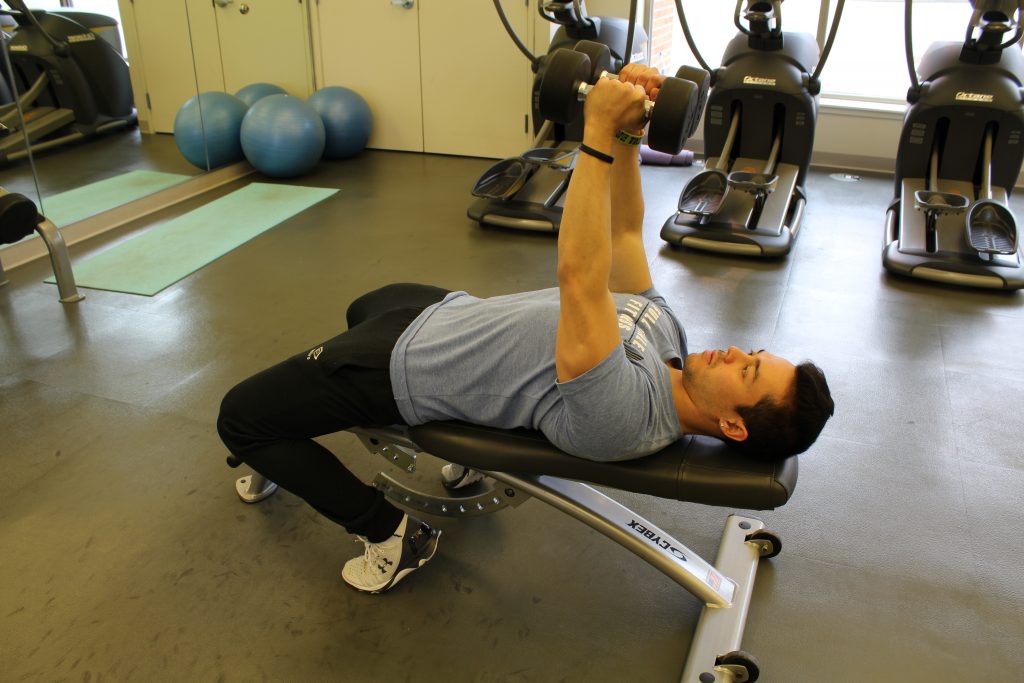
2.Chest fly exercise
-lie flat on your back on a flat diagonal bench . Place your feet firmly on the floor beside the bench. Your head and the back should stay firmly pressed into the bench throughout the activity.
-Ask a person to hand you the 2 dumbbells, or gently pick them up from the floor and grasp 1 in each hand.
-Lift arms above the head so they’re extended but not laid off. There must be a slight bend at your elbow and your palms and dumbbells should be fronting each other.
-Inhale and slowly lower dumbbells in a curve move until they’re in line with the chest. Your arms will be extended to the sides but not let off. Don’t put your arms lower than your shoulders.
-Exhale and slowly press the dumbbells up in the same curve move.
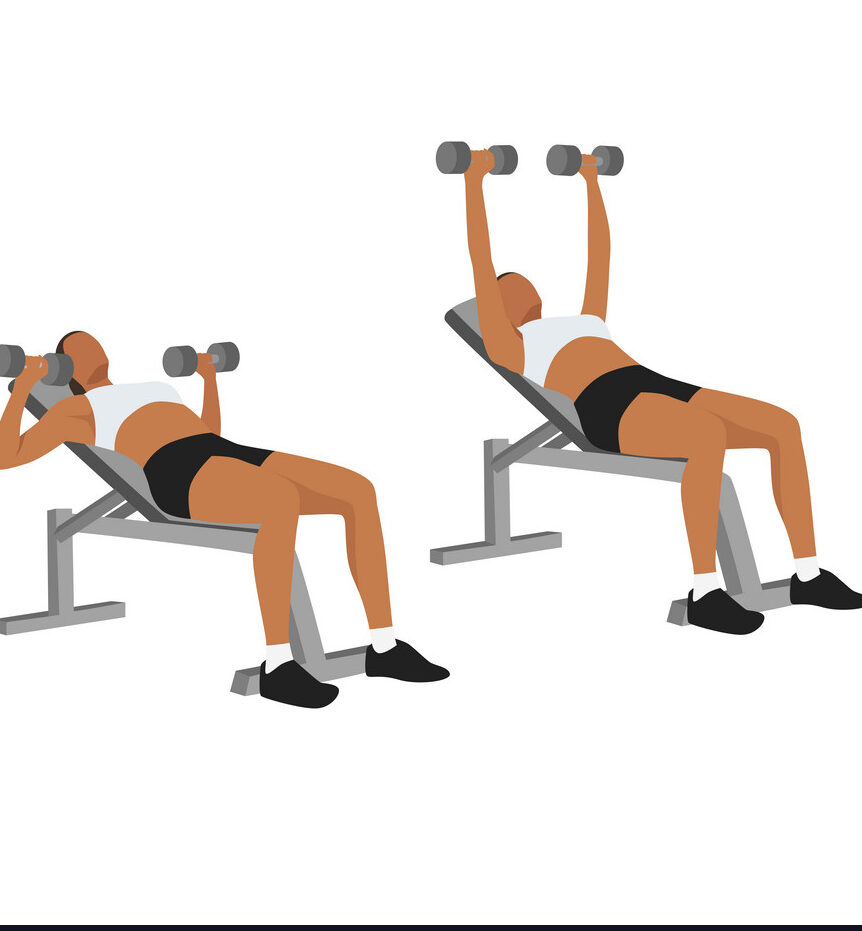
-Perform 10 – 15reps. Rest. Do 3 sets total.
3.chest press
-Lie down on the floor, bench, or mat with your knees slightly bent, feet on the floor.
-Grab the dumbbells and press them on top of you, elbows slightly bent.
-Pull the dumbbells near your chest.
-Complete 3–6 sets of 4–8 reps.
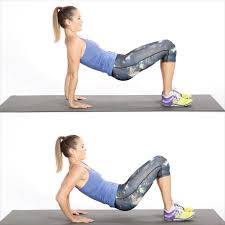
4.triceps dips on the floor
-Performing Tricep Dips on the Ground
-lie down on the floor with your back facing down and your hands directly under your shoulders.
-Extend your bases in front of you so your legs are slightly bent.
-Sluggishly curve your arms as you lower your upper body down, and at the same time move your butt towards your feet.
-So the relaxed isolation on the triceps is repositioning your upper body and butt in a down and forward movement. Keep your back is straight on going down.
Push your body up to back to the start position
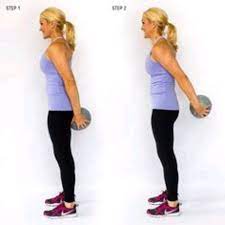
5.triceps pulses
-Start by gripping a dumbbell in both hands. with your arms swing beside your body.
-Stand tall with your feet either together or shoulder-width apart so that your body is letterhead.
-Keep your head facing ahead and your neck in alignment with your spine.
-Twist the dumbbells so that your palms are looking behind you.
-Push your palms back until you feel your triceps stretch.
-Keeping that pressure on your triceps, perform a pulsating movement. focusing on working your triceps.
-Repeat for 20- 30 pulses.
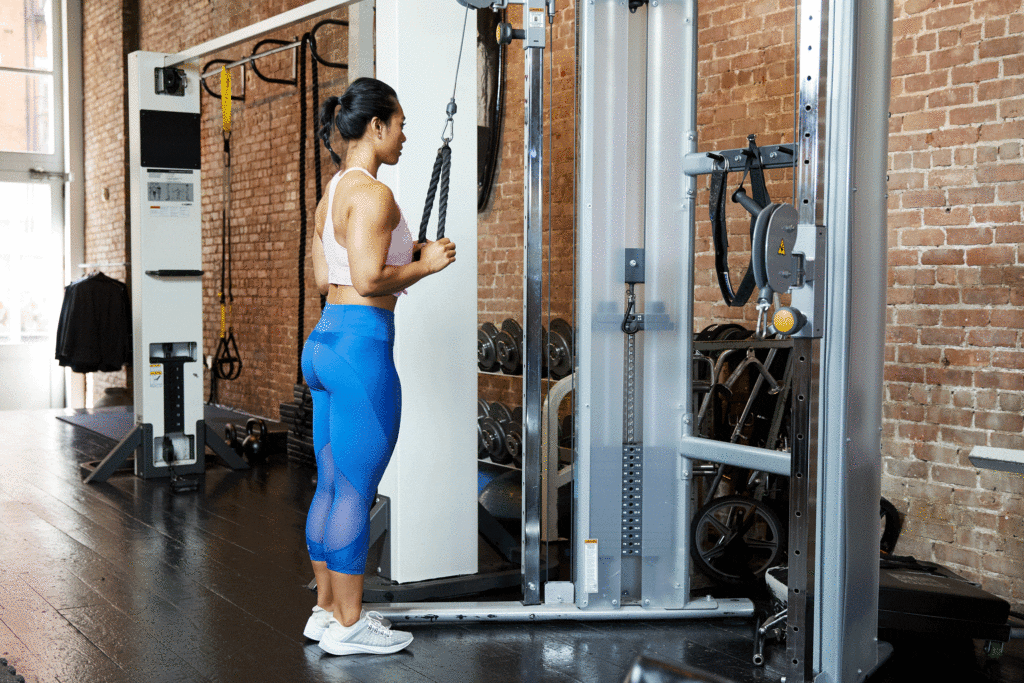
6.Triceps push-downs
-Grab hold of both sides of the resistance band with both hands.
-Maintain proper posture by holding your chest up and squeezing the shoulder blades together.
-Pull the band down until the elbows are full-extension, while adapting for the increase in resistance as the bands lengthen.
-Hold on to your elbows tucked, and resistance outward flare while reaching this last position.

7.Push up
-Start this exercise in a high push-up position. Lower your body up to your chest close to reach the ground.
-Push back up and, at the same time, rotate one side of your body raising. Raise your arm toward the ceiling.
-Hold this position for seconds, and then back to your starting position.
-Alternate sides with each repetition.
-Strengthen Your Upper Body and Prevent Injuries
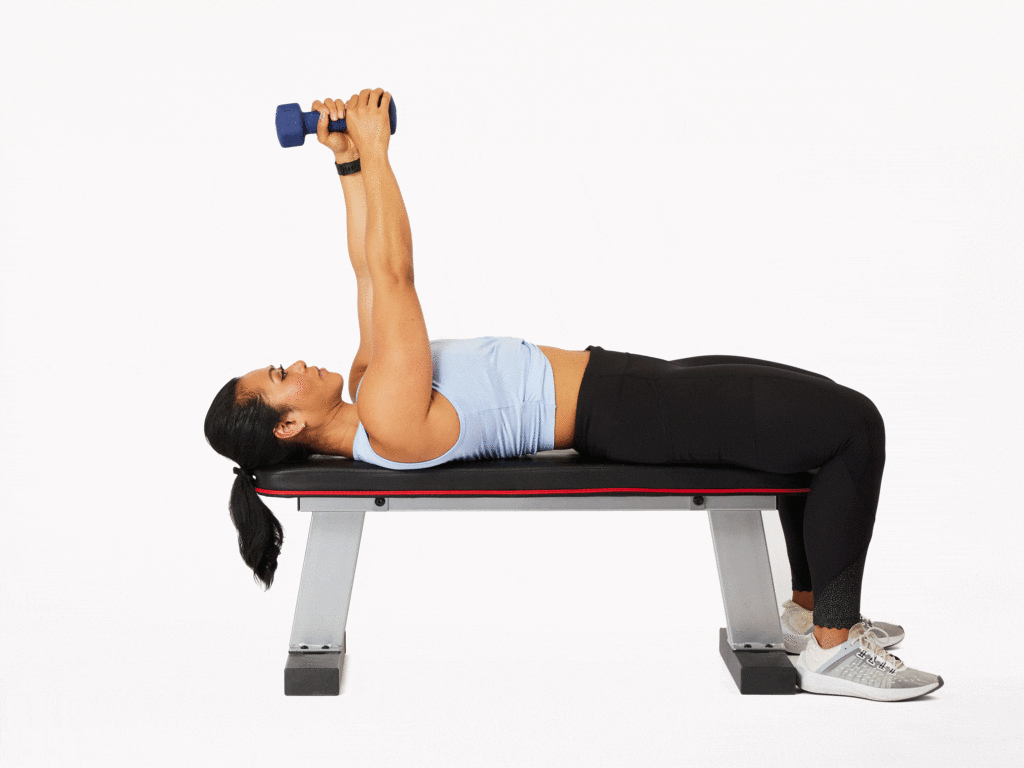
8.skull crushers
-Lie face up on a flat bench. Your all body must on the bench, except your lower legs. Your knees are bent and your feet are a touch on the floor. Arms are extended above the chest, elbows shoulder-width apart( not locked), and both hands are gripping one end of a dumbbell.
-Flex your elbows and lower the weight down near the top of your head. Your upper arms should remain fairly vertical to your body. This keeps the pressure on the triceps versus shifting it to the shoulders.
-Hold up lowering the weight behind the head. The bottom of the dumbbell head should be around in line with the bench’s top, or even a little higher if this feels too heavy,.
-Reverse the movement until the weight is above the chest in the original starting position. Keep from locking the elbow to maintain pressure in your triceps muscle.
-Repeat.
Preventive measures
- DO the proper warm-up before some exercises or sporting activity.
- Stretch after exercising or playing sports
- Avoid immediate intense strength training and build strength gradually
- Do Regular stretching and strengthening exercises for your sports, fitness, or work exertion, as a part of your overall physical activities
- An exercise program can help to minimize your danger of muscle strains.
- Try to be in a shape to play your sport; don’t play your sport to get in shape.
- If you have a physically demanding occupation, regular exercise can help to help injuries.
- Follow a healthy diet and an exercise program to maintain a healthy weight. The overweight can put added pressure on the muscles, making muscle strains again probable to do

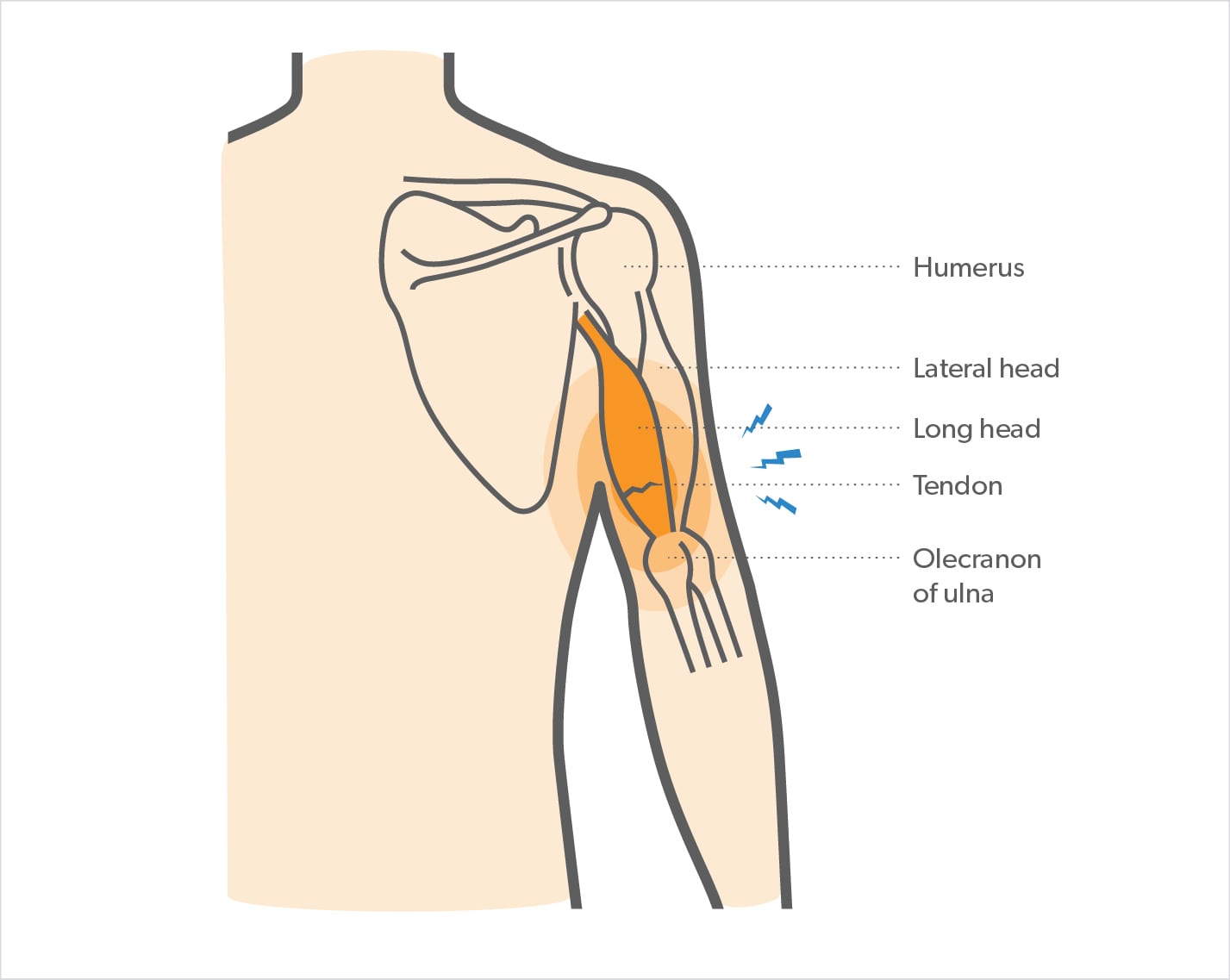
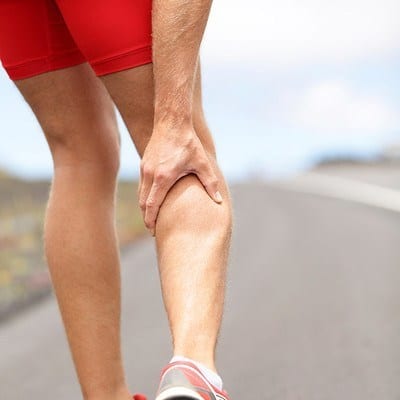
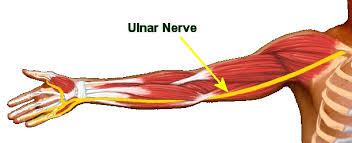

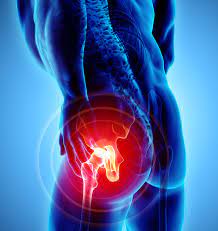
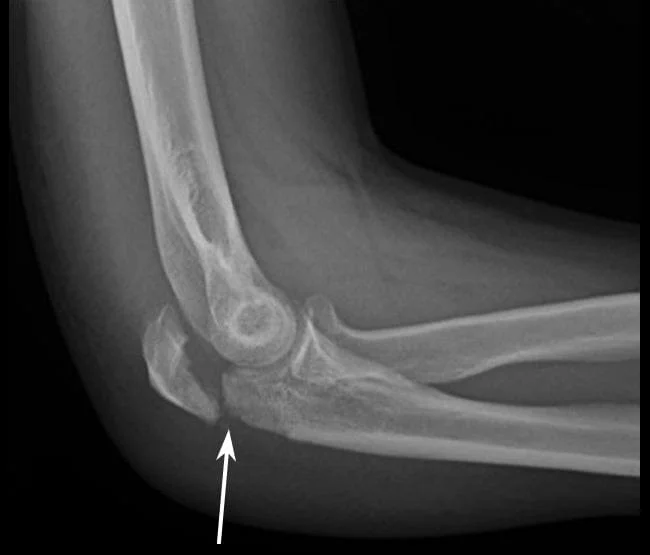
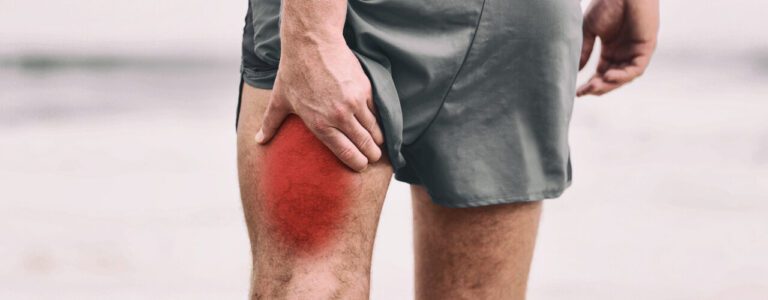
One Comment